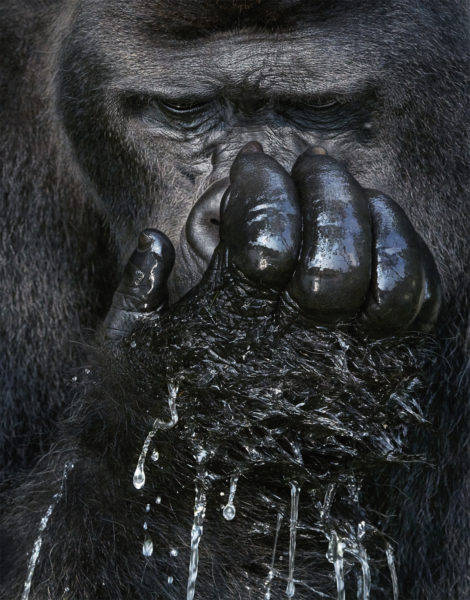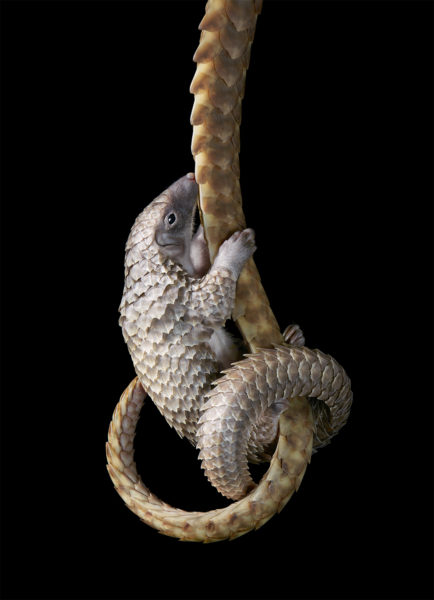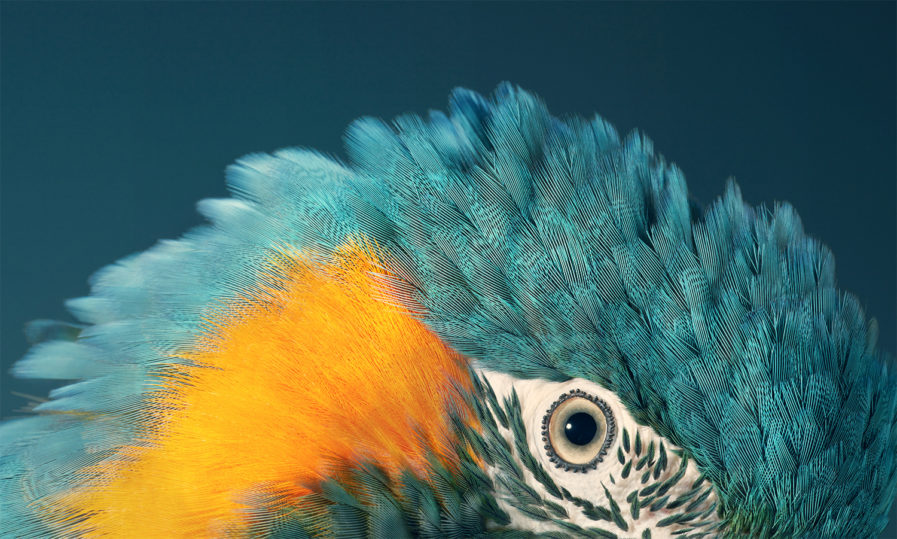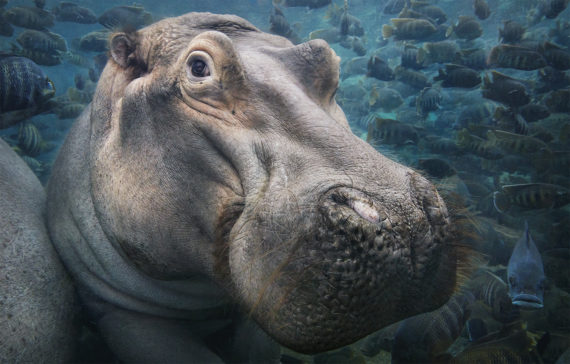Above: blue-throated macaw, from Tim Flach’s Endangered (Abrams) / All images © 2017 Tim Flach
London-based nature photographer Tim Flach has a knack for exploring complexities within singular topics: his lavish books on horses (Equus, 2008) and canines (Dogs, 2010) are multifaceted studies of their species, while More Than Human (2012) surveys a swath of the animal kingdom ranging from seahorses to grizzly bears. Flach’s new volume, Endangered, focuses on animals who face extinction—and their numbers and range are shockingly large. In Flach’s trademark portrait style (“I try to establish an emotional connection with the viewer,” he says) these species are heartbreakingly beautiful. Case in point: the blue-throated macaw (above), which the book reports as “ransacked by the pet trade”—in the wild, fewer than 250 birds remain and the species is “barely genetically viable.”
A parrot cousin, the military macaw (above) is slightly less threatened but still “vulnerable,” according to Endangered’s thorough reporting (in text by Professor Jonathan Baillie and Sam Wells). In habitats ranging from Mexico to Argentina, these birds “have some of the loudest voices in South American forests.” While they can mimic words, they don’t know how to use them. “If they could, they might persuade us to leave them in their trees, and leave those trees in the ground.”


Flash’s shot of a western lowland gorilla drinking (above left) shows the human-like emotion of a critically threatened African species. Endangered recounts the efforts to rescue and protect these and other animals in the wild, as well as dangers they face from man and nature. The infant of another vulnerable African, the white-bellied pangolin (above right), clings to his mother’s tale when they forage for food.
The common hippopotamus (shows here underwater) has fallen victim to the bushmeat trade, with its huge canine teeth rivaling elephant tusks in value on the black market and its hide sought for leatherwork. The multiyear Endangered project seeks to inspire both awe and action: “Never before has it been so important to connect people with nature—our future depends on it.”







